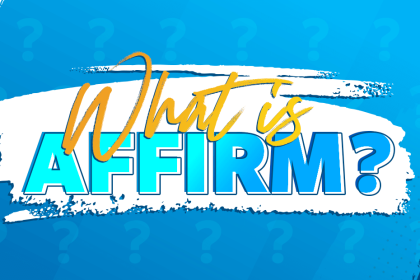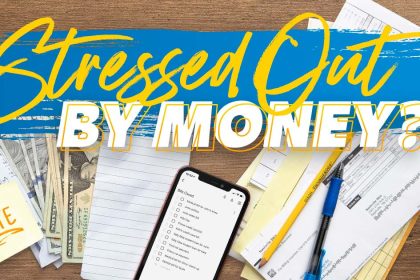Are you looking to take your business to the next level? One way to do that is by getting a business loan. But before you apply, it’s important to know the seven requirements you must meet to increase your chances of approval. Don’t miss out on this opportunity to grow your business – read on to discover the seven business loan requirements you need to know.
Small business loan requirements.
Lenders consider the following requirements when evaluating a potential small business owner for a business loan:
1. Credit score
Nearly every lender will look at your credit score when they underwrite a loan. A credit score is a measure of how likely you are to pay back a loan. It’s calculated over time as you apply for and pay back credit cards, car loans, home mortgages, and other debt.
Business owners of a young company will likely need to show their personal credit score as well as their business credit score (and yes, there are two scores). Depending on the lender, they all have a score threshold they will not go below. If your score falls below the minimum, you likely won’t qualify for a traditional loan.
| Type | Credit Score Requirement* |
| SBA Loan | Minimums start at 650; 700 is ideal |
| Term Loan | Minimums start at 600 |
| Line of Credit | Minimums start at 600 |
| Invoice Factoring | Typically have no credit score requirement |
| Equipment Financing | Minimums start at 520 |
| Business Cash Advance | Minimums start at 500 |
Improving your personal credit score:
Boosting your credit score takes time, but it’s worth it to secure a business loan. Start by paying bills promptly, as late payments harm your score. Keep credit card balance low and limit new accounts. Review your credit report for errors and dispute if needed.
Building business credit:
To establish your business credit, begin by opening a business bank account and obtaining a business credit card. Ensure timely payments and avoid excessive business debt. Collaborate with suppliers and vendors who report payment history to credit bureaus, building a reliable track record that enhances your business’s credit score.
2. Revenue
It’s difficult for anyone to offer a small business owner a loan if there’s no clear evidence they have the capacity to repay the loan.
Most lenders will evaluate your ability by comparing your annual revenue against your recurring debt. Nobody wants to see you default on a loan, which is why an early-stage or idea-stage company with no product on the market to sell and no income has such a tough time securing financing. In some cases, a higher monthly revenue will make up for a lower credit score.
Typical minimum revenue requirements:
Lenders typically have a set of revenue requirements when approving a business loan. These thresholds vary by lender and the type of loan you’re applying for, however, a common benchmark is an annual revenue of at least $50,000. Here are some general guidelines:
- SBA Loan: Minimum annual revenue requirements start around $96,000.
- Term Loan: Minimum annual revenue starts at $96,000.
- Line of Credit: Minimum annual revenue typically starts at $50,000.
- Invoice Factoring: This type of financing usually requires a minimum of $10,000 in monthly invoices.
- Equipment Financing: Revenue requirements vary widely, but generally start at $50,000.
- Business Cash Advance: This financing option usually requires at least $10,000 in monthly revenue.
It’s important to note that these are general guidelines and the specific revenue requirements may vary by lender. It’s always a good idea to check with potential lenders about their specific requirements.
Increasing your revenue:
If your business’s revenue is not yet at these levels, there are several strategies you could employ to increase your sales and grow your business. Consider exploring new markets, expanding your product line, or implementing a new marketing strategy. Remember, a steady and increasing revenue stream not only increases your chances of qualifying for a business loan but also indicates the overall health and success of your business.
Debt Service Coverage Ratio
The Debt Service Coverage Ratio (DSCR) is a measure that lenders use to assess whether a business generates enough revenue to comfortably cover its debt obligations, including principal, interest, and lease payments. The DSCR is calculated by dividing a company’s net operating income by its total debt service.
Understanding DSCR:
A DSCR of less than 1 indicates that the business does not generate enough revenue to cover its debt, posing a risk to the lender. A ratio higher than 1, on the other hand, suggests that the business is capable of fulfilling its debt obligations and possibly maintaining additional debt.
Typical DSCR requirements:
Different lenders may have different DSCR requirements, but a common benchmark is a DSCR of at least 1.25. Higher-ratio requirements may signify that the lender is risk-averse and wants to ensure the borrower can comfortably manage the loan repayments.
Improving your DSCR:
To improve your DSCR, you can either boost revenues or reduce business debts. Strategies to increase revenues might include expanding into new markets, launching new products, or improving marketing efforts. Reducing debts could involve renegotiating terms with suppliers or consolidating loans to lower monthly payments. Remember, a higher DSCR can not only improve your chances of securing a business loan but also enable you to negotiate better terms.
3. Time in business.
Time in business is another common metric lenders use to measure capacity. Time in business requirements vary widely from six months to two years. SBA lenders typically require a minimum of two years of business financial statements. A handful of lenders will work with startups.
4. Collateral/personal guarantee.
Collateral is an asset such as property, cash, or larger assets like equipment that a loan applicant offers as a guarantee on a loan. If the business defaults on the loan, the lender can claim the collateral.
Instead of collateral, some lenders will ask for a personal guarantee, which allows the lender to seize personal assets if the business defaults on the loan. Essentially you accept personal liability for the business loan. Some lenders offer unsecured business loans, that don’t require collateral but will likely still require a personal guarantee. In general, these loans will be harder to qualify for since they are riskier for the lender.
5. Business plan with a loan proposal.
Along with your business plan, you will want to address how your business will use the loan and expected growth projections.
What will the capital be used for?
Lenders will want to know specifics. Are you investing in new equipment? Hiring more employees? Expanding or upgrading your office space? Don’t leave anything out. Specify what it will be used for with corresponding dollar amounts.
You’ll also want to articulate why you need these improvements. How will these investments grow your business?
What is your repayment plan?
There should be two parts to your answer:
- What is your preferred repayment plan (which will then be negotiated)?
- What if Repayment Plan A falls through? What if your sales are worse than projected? What’s Plan B?
Lenders want to see a realistic vision of how the invested capital will expand and grow your bottom line so that, ultimately, they receive repayment.
What are the qualifications/capabilities of your management team?
It takes more than money to grow a successful business. If your team is underqualified or experiencing any kind of dysfunction, you’ll want to take this into consideration when you think about the risks of taking on debt. Make sure your team is qualified and has the resume to impress lenders.
6. Industry, geography, & company size.
Different lenders may have specific preferences for the industry, geographical location, and the size of the company they are willing to finance. This section will delve into how these factors can impact your chances of acquiring a business loan.
Industry:
Many lenders place restrictions on the types of industries they will work with or will have more stringent requirements if an industry is considered high-risk. Certain loan types, such as SBA loans and invoice factoring, also have industry restrictions.
The following industries are restricted from qualifying for an SBA loan:
- Loan packaging
- Investment or lending
- Multi-sales distribution
- Speculation
- Gambling
Learn more about SBA loan requirements
Invoice factoring companies only work with B2B or B2G industries.
Other lenders specialize in specific industries such as healthcare or eCommerce. By applying through Lendio, we can connect you with the lender that is the best fit for your industry.
Geography:
Some lenders have geographical restrictions and only operate in specific states or regions. This could be due to licensing requirements, regional economic conditions, or a focus on local communities. It’s important to verify that the lender you’re considering operates in your business location. Additionally, businesses located in economically disadvantaged areas or enterprise zones may have access to special local or federal financing programs.
Company size:
Your business’s size, usually determined by the number of employees and annual revenue, can also influence your eligibility for certain loans. For example, the U.S. Small Business Administration (SBA) defines a small business based on these factors and sets different thresholds for different industries. Some lenders cater specifically to small businesses, while others focus on medium to large enterprises. Understanding your business size classification can help you identify potential lending opportunities.
7. Financial documentation
Most lenders will require the following documentation as part of the application and approval process:
- Income tax returns from the previous three years: The more profitable your small business looks on tax returns, the more likely you’ll get small business financing.
- Balance sheet and income statement: Confirm your financial statements are 100 percent accurate.
- 3 to 12 months of business bank statements: You’ll want to be ready to explain any drastic periods where you were low on cash or even went negative.
- Business license and registration
- Articles of incorporation
- Business plan
- You’re probably more qualified for a small business loan than you think. Take a deep breath, fill out our 15-minute application, and explore your options.
Quickly compare loan offers from multiple lenders.
Applying is free and won’t impact your credit.
*The information contained in this page is Lendio’s opinion based on Lendio’s research, methodology, evaluation, and other factors. The information provided is accurate at the time of the initial publishing of the page (June 13, 2024). While Lendio strives to maintain this information to ensure that it is up to date, this information may be different than what you see in other contexts, including when visiting the financial information, a different service provider, or a specific product’s site. All information provided in this page is presented to you without warranty. When evaluating offers, please review the financial institution’s terms and conditions, relevant policies, contractual agreements and other applicable information. Please note that the ranges provided here are not pre-qualified offers and may be greater or less than the ranges provided based on information contained in your business financing application. Lendio may receive compensation from the financial institutions evaluated on this page in the event that you receive business financing through that financial institution.
Read the full article here


















